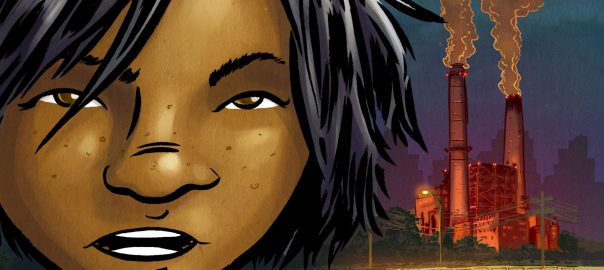As we continue to make positive ecological, economic, and social impacts in each community, we have been asking ourselves how we can “thread the needle” and invest in vulnerable and disadvantaged communities while minimizing the negative impacts of gentrification and displacement.
Dr. Ian Mell from the University of Manchester recently published an article in Frontiers in Sustainable Cities on the role of green infrastructure in cities as a tool for economic and ecological “regeneration”. Dr. Mell’s article is one of a series of articles in both the peer-reviewed and popular literature that is critically analyzing whether urban greening projects are, not only providing measurable ecological benefits, but also providing “positive change” in communities.
Dr. Mell’s article identifies two United States examples where green infrastructure development has resulted in varying levels of gentrification and displacement — The New York City High Line and the Atlanta BeltLine. An earlier study by researchers at the University of Utah and the University of Colorado in Urban Studies found that long linear greenway parks like those in New York and Atlanta (plus Chicago’s 606 trail and Houston’s Buffalo Bayou Park) cause the most gentrification due to the amount of real estate development and redevelopment that can take place in close proximity to the amenity. Although the study also found that parks near downtown caused relatively greater gentrification than other new parks in cities, the study finds that there is less gentrification on balance in cities with higher-quality park systems.
Based on these findings, Dr. Mell sums up urban greening initiatives well: “All investment in [green infrastructure] …needs to be cognizant of the benefits and disservices that may develop because of landscape change. These potential problems should not limit the discussion of [green infrastructure] intervention in regeneration activities but should be examined to assess who benefits and who loses from change, and how any negative aspects of [green infrastructure] can be mitigated against.” As new urban greening projects come online around the US, more attention is now being paid to ensure that the negative externalities and unintended consequences of well-intentioned investments are minimized and that any new “value capture” near these projects can benefit the current residents near these amenities.
For the past decade, The Conservation Fund has been involved in green infrastructure regeneration in US cities through its Parks with Purpose program, with pilot initiatives in places like Atlanta, Baltimore, Durham, and Raleigh. As we continue to make positive ecological, economic, and social impacts in each community, we have been asking ourselves how we can “thread the needle” and invest in vulnerable and disadvantaged communities while minimizing the negative impacts of gentrification and displacement.
While we do not have all the answers, The Conservation Fund has been intentional with approaches intended to support local communities and minimize unintended consequences. These include: (1) planning, development, and construction of parks by the community (residents near Mattie Freeland Park identified key amenities during the visioning process); and (2) identifying opportunities for local value (acquisition of commercial land adjacent to the Harbour-8 Park in Richmond, California to support local park maintenance).

The next frontier in this work, supported by the findings of the study referenced earlier, is a two-pronged approach. For linear and downtown green infrastructure, affordable housing provision and anti-displacement regulations, through tax increment financing and inclusionary housing tactics, can be implemented. For other areas of the city, making more green infrastructure investments in park-poor, lower-income communities, in combination with protecting nearby affordable housing, would make cities more equitable and livable. Alessandro Rigolon from the University of Utah Department of City & Metropolitan Planning and Jon Christensen from the UCLA Institute of Environment & Sustainability are demonstrating leadership in this space through their research into parks-related anti-displacement strategies (PRADS).
Coordinating green infrastructure investment and affordable housing will be an ongoing challenge given the institutional history and constraints of each industry, but it will be worth the effort to try and, as I like to say, would not be any fun if it was easy.
Will Allen
Chapel Hill







Leave a Reply